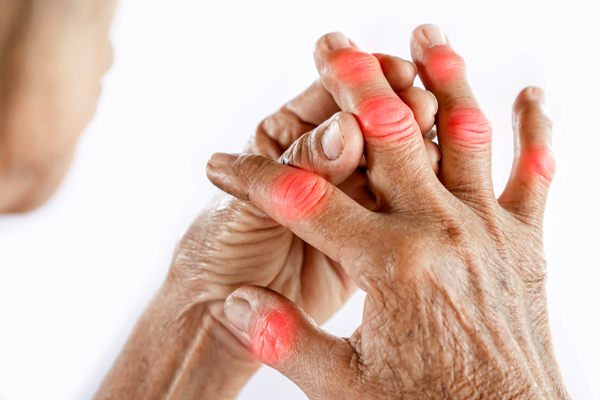Rheumatic Joint Pain

Rheumatic Joint Pain
What is Rheumatic Joint Pain?
Rheumatic joint pain refers to the discomfort and stiffness in the joints associated with rheumatic diseases, which are autoimmune and inflammatory conditions affecting the muscles, joints, and bones. This type of joint pain is often chronic and can significantly impact a person’s mobility and quality of life. Rheumatic diseases include rheumatoid arthritis, lupus, gout, ankylosing spondylitis, and psoriatic arthritis, among others.
Symptoms of Rheumatic Joint Pain
The symptoms of rheumatic joint pain vary depending on the underlying condition but may include:
- Persistent pain, tenderness, or stiffness in the joints
- Swelling, warmth, and redness around affected joints
- Morning stiffness lasting more than 30 minutes
- Fatigue and general feelings of discomfort or malaise
- Limited range of motion or difficulty performing daily tasks
- Joint deformities or changes in joint shape (in advanced cases)
Causes of Rheumatic Joint Pain
Rheumatic joint pain is caused by inflammation in the joints, which occurs when the immune system mistakenly attacks healthy tissue. This autoimmune response leads to swelling and damage to the joints, resulting in pain and reduced mobility. Specific causes depend on the underlying rheumatic condition:
- Rheumatoid Arthritis (RA): An autoimmune disorder where the immune system attacks the lining of the joints, causing inflammation and joint damage.
- Lupus: A systemic autoimmune disease that can cause inflammation in various parts of the body, including the joints.
- Gout: A form of arthritis caused by the buildup of uric acid crystals in the joints, leading to intense pain and swelling, often in the big toe.
- Ankylosing Spondylitis: A type of inflammatory arthritis that primarily affects the spine and the sacroiliac joints, leading to pain and stiffness in the lower back and pelvis.
- Psoriatic Arthritis: An autoimmune disease linked to psoriasis, causing inflammation and joint pain along with skin symptoms like scaly patches.
Risk Factors for Rheumatic Joint Pain
Several factors can increase the risk of developing rheumatic joint pain, including:
- Age: While rheumatic conditions can affect people of all ages, the risk increases with age.
- Gender: Women are more likely to develop autoimmune rheumatic conditions like rheumatoid arthritis and lupus.
- Genetics: A family history of rheumatic diseases can increase the likelihood of developing similar conditions.
- Infections: Certain bacterial and viral infections can trigger autoimmune responses that lead to rheumatic joint pain.
- Lifestyle factors: Obesity, smoking, and sedentary behavior can contribute to the development and worsening of rheumatic conditions.
Diagnosis of Rheumatic Joint Pain
Diagnosing rheumatic joint pain typically involves:
- Medical history and physical exam: A detailed evaluation of symptoms, family history, and a physical examination of the affected joints.
- Blood tests: To detect markers of inflammation, autoantibodies, and other signs of autoimmune diseases (e.g., rheumatoid factor, anti-CCP antibodies).
- Imaging studies: X-rays, MRIs, or ultrasounds may be used to assess joint damage and inflammation.
- Joint aspiration: In cases of suspected gout or infection, fluid may be removed from the joint for analysis.
Treatment of Rheumatic Joint Pain
Treatment for rheumatic joint pain aims to reduce inflammation, relieve pain, and prevent joint damage. Depending on the specific condition, treatment may involve:
-
Medications:
- Nonsteroidal anti-inflammatory drugs (NSAIDs): To reduce pain and inflammation.
- Corticosteroids: Powerful anti-inflammatory drugs that help control acute flare-ups.
- Disease-modifying antirheumatic drugs (DMARDs): Medications such as methotrexate that slow the progression of rheumatic diseases and prevent joint damage.
- Biologic agents: Targeted therapies that interfere with specific immune system components, such as TNF inhibitors, which are used in conditions like rheumatoid arthritis.
- Colchicine or urate-lowering drugs: For managing gout and preventing future flare-ups.
-
Physical therapy: Regular exercise and physical therapy can help maintain joint flexibility, strengthen surrounding muscles, and improve overall function. A physical therapist can design a personalized exercise plan to manage joint pain and prevent stiffness.
-
Lifestyle changes:
- Weight management: Reducing body weight can alleviate pressure on weight-bearing joints like the knees and hips.
- Healthy diet: A diet rich in anti-inflammatory foods, such as fruits, vegetables, whole grains, and omega-3 fatty acids, can help manage symptoms. Avoiding foods high in purines (in the case of gout) or maintaining a gluten-free diet (in celiac disease-related arthritis) may be recommended.
- Smoking cessation: Quitting smoking can help slow disease progression, especially in rheumatoid arthritis.
-
Joint protection: Using assistive devices such as braces, splints, or canes can reduce stress on affected joints and improve mobility.
-
Surgery: In severe cases of joint damage, joint replacement or reconstruction surgery may be necessary to restore mobility and relieve pain.
Managing Rheumatic Joint Pain
Rheumatic joint pain is often a chronic condition that requires long-term management. It's important to work closely with a healthcare provider, such as a rheumatologist, to create an individualized treatment plan. Regular follow-ups, medication adjustments, and lifestyle modifications can help control symptoms and improve quality of life.